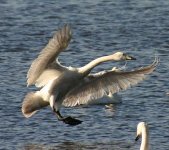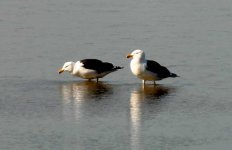Max,
It's all about laying as many mpxls on your target as possible. The larger your subject is in the VF, the more detail you will capture. Also, the more shallow DOF comes into play.
With experience you will understand that there comes a point (or actually a distance) when you will likely not even bother shooting at, or beyond. You will understand that the resulting shot will probably be a 100% crop and there won't be much, if any, subject detail. In those cases, Keith R's suggestion is spot on. Do a nice composition where feather detail is not important (silohettes and the like). Unless you are listing or cataloguing, there's really not much else you can do. You can add a TC, but that just moves the distance out a bit farther. Unless you have the Hubble attached, long reach and amount of detail will always be a trade off.
Of course the larger the bird, the farther away it can be and still fill enough of the VF. Sparrows, more distant than say 25 feet are tough to capture with any detail. Large ducks, at 100 feet can show very nice detail. Ducks/hawks/egrets at 150 feet may not be worth raising your lens for.
I am sure you've heard the "I want/need more reach" refrain before. It is true. A birdshooter never has enough reach. There's always that GREAT shot you could get, or could have gotten if only you would have had a few hundred more millimeters to work with........LOL
OK, now for some meaningful information. What can you do to make these long distance shots come out as well as possible? Stabilization may help the most. A good monpod or tripod (especially when coupled with a remote) can help get the sharpest possible capture. Fast speeds and good panning technique (for fliers) will help. But the best advice is to get as close as possible. Whether that means stalking and yes even wearing camo, working from cover or a blind, or even staking out a feeder, a field, a pond or stream.
That's what makes this type of photography so challenging and enjoyable. If you could just walk right up to a rare bird and shoot a portrait, it would be something anyone could do and pretty boring at that. You might as well go to the zoo or a petstore....lol
There's no fun in that, right? ;-)
Have a good one Max,
Steve





